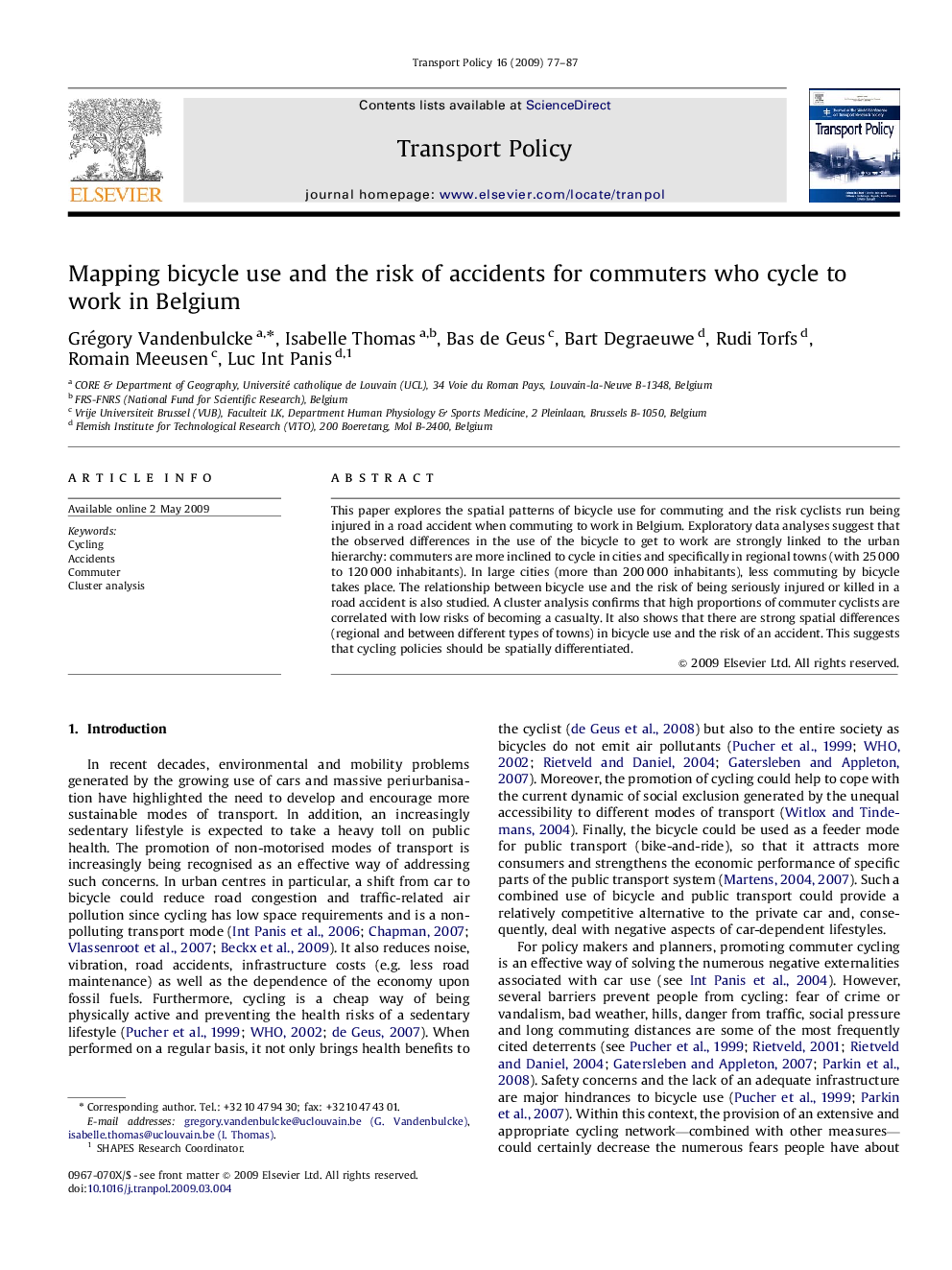| Article ID | Journal | Published Year | Pages | File Type |
|---|---|---|---|---|
| 1065497 | Transport Policy | 2009 | 11 Pages |
This paper explores the spatial patterns of bicycle use for commuting and the risk cyclists run being injured in a road accident when commuting to work in Belgium. Exploratory data analyses suggest that the observed differences in the use of the bicycle to get to work are strongly linked to the urban hierarchy: commuters are more inclined to cycle in cities and specifically in regional towns (with 25 000 to 120 000 inhabitants). In large cities (more than 200 000 inhabitants), less commuting by bicycle takes place. The relationship between bicycle use and the risk of being seriously injured or killed in a road accident is also studied. A cluster analysis confirms that high proportions of commuter cyclists are correlated with low risks of becoming a casualty. It also shows that there are strong spatial differences (regional and between different types of towns) in bicycle use and the risk of an accident. This suggests that cycling policies should be spatially differentiated.
